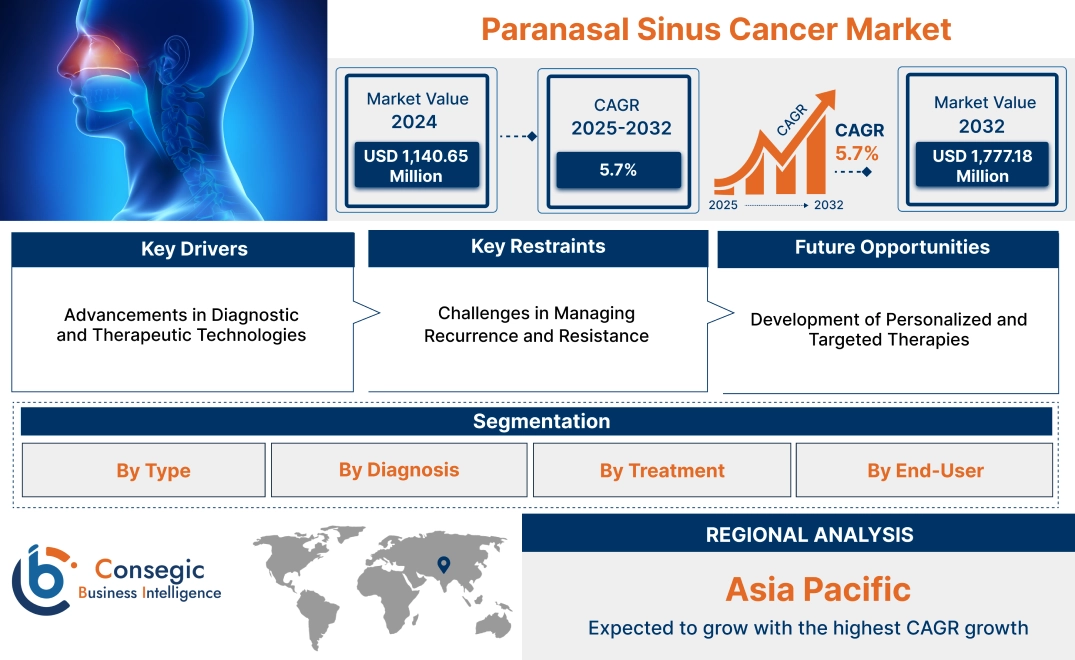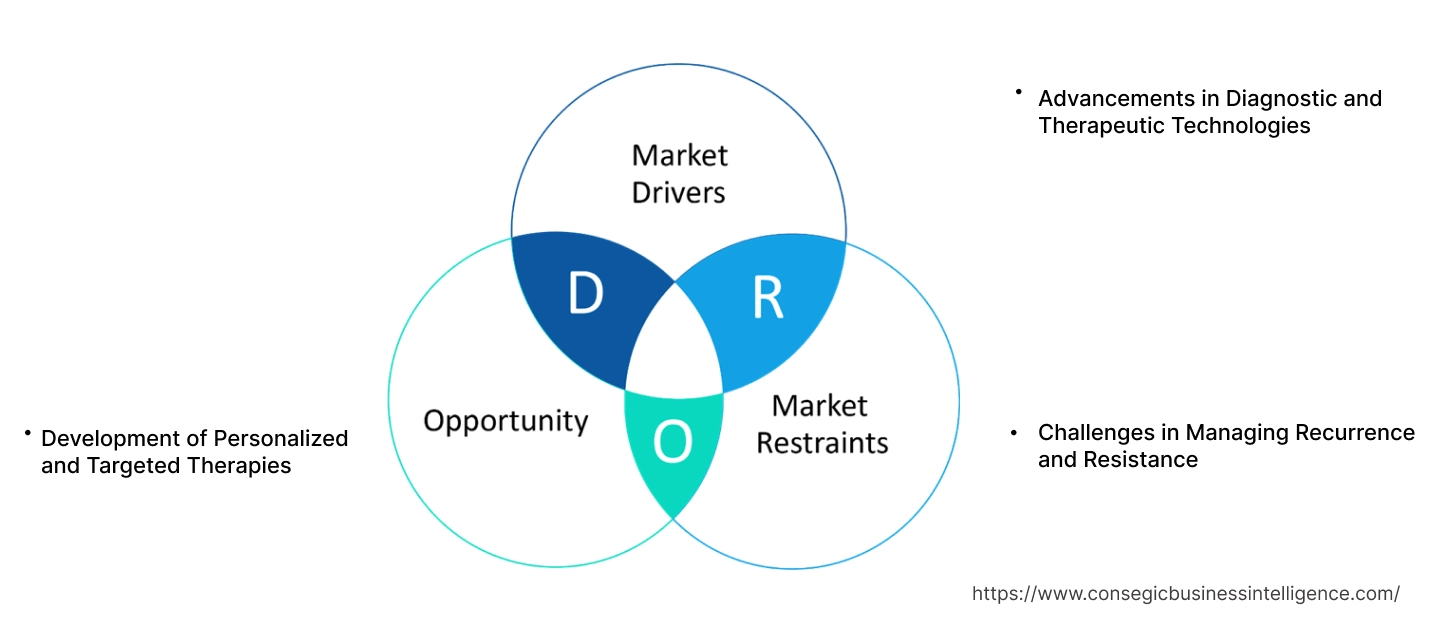Paranasal Sinus Cancer Market Size:
Paranasal Sinus Cancer Market size is estimated to reach over USD 1,777.18 Million by 2032 from a value of USD 1,140.65 Million in 2024 and is projected to grow by USD 1,185.34 Million in 2025, growing at a CAGR of 5.7% from 2025 to 2032.
Paranasal Sinus Cancer Market Scope & Overview:
The paranasal sinus cancer is a rare malignancy occurring in the paranasal sinuses, primarily affecting the nasal cavity and adjacent structures. This market encompasses surgical interventions, radiation therapy, chemotherapy, and targeted therapies aimed at improving survival rates and patient outcomes. Key characteristics of paranasal sinus cancer treatments include precision in targeting tumor sites, minimizing damage to surrounding tissues, and the integration of multimodal treatment approaches. The benefits include enhanced tumor control, reduced recurrence rates, and improved quality of life for patients. Applications span hospitals, cancer treatment centers, and specialty clinics for managing conditions like squamous cell carcinoma, adenocarcinoma, and melanoma of the paranasal sinuses. End-users include oncologists, surgeons, and radiologists, driven by advancements in diagnostic imaging, the development of targeted cancer therapies, and increasing awareness of early diagnosis and treatment for head and neck cancers.
Paranasal Sinus Cancer Market Dynamics - (DRO) :
Key Drivers:
Advancements in Diagnostic and Therapeutic Technologies
Innovations in diagnostic imaging and therapeutic technologies have significantly improved the detection and treatment of paranasal sinus cancer. Advanced imaging modalities, such as PET-CT scans and high-resolution MRI, enable precise tumor localization and staging, facilitating more effective treatment planning. In addition, minimally invasive surgical techniques and robotic-assisted surgeries are reducing recovery times and surgical complications, enhancing patient outcomes.
Trends in precision medicine have led to the development of targeted therapies, including monoclonal antibodies and immunotherapies, which offer tailored treatment approaches for specific genetic and molecular cancer profiles. Analysis highlights that these advancements are not only increasing treatment efficacy but also minimizing side effects, making them critical components of modern oncological care.
Key Restraints:
Challenges in Managing Recurrence and Resistance
Paranasal sinus cancer often presents challenges in long-term management due to high recurrence rates and resistance to conventional therapies. Recurrence frequently occurs after initial treatment, requiring more aggressive or alternative therapeutic strategies, which may not always yield favorable outcomes. Additionally, certain tumor types develop resistance to chemotherapy and radiation, limiting the effectiveness of these treatments.
Trends in ongoing research are focused on understanding the mechanisms of recurrence and resistance to develop novel therapeutic interventions. However, the lack of reliable biomarkers for predicting treatment response remains a significant hurdle, complicating efforts to manage the disease effectively over time.
Future Opportunities :
Development of Personalized and Targeted Therapies
The rise of personalized medicine has opened new avenues for developing therapies tailored to the genetic and molecular profiles of paranasal sinus cancer. Targeted treatments, such as tyrosine kinase inhibitors and immune checkpoint inhibitors, are being designed to specifically address the pathways driving cancer progression. These therapies offer improved efficacy and fewer side effects compared to traditional methods, aligning with paranasal sinus cancer market trends in patient-centric care.
Advancements in biomarker research and next-generation sequencing (NGS) technologies are enabling the identification of actionable genetic mutations, further supporting the development of precision therapies. Analysis indicates that the focus on personalized treatments has the potential to significantly improve survival rates and quality of life for patients with paranasal sinus cancer, while also addressing unmet needs in this challenging oncology segment.
Paranasal Sinus Cancer Market Segmental Analysis :
By Type:
Based on type, the market is segmented into squamous cell carcinoma, adenocarcinoma, mucoepidermoid carcinoma, and others.
The squamous cell carcinoma segment accounted for the largest revenue in paranasal sinus cancer market share of 58.40% in 2024.
- Squamous cell carcinoma is the most common type of paranasal sinus cancer, contributing significantly to the overall market share.
- Its high prevalence, particularly among individuals exposed to occupational hazards and environmental carcinogens, drives its dominance.
- Advancements in early diagnostic techniques have improved the detection rate of squamous cell carcinoma in the paranasal sinus.
- The increasing availability of targeted therapies for squamous cell carcinoma has further supported trends in this segment.
The adenocarcinoma segment is anticipated to register the fastest CAGR during the forecast period.
- Adenocarcinoma is less common but often associated with occupational exposures, such as wood dust, leading to rising incidence in specific demographics.
- Growing awareness about rare subtypes of sinus cancers has improved diagnosis and treatment, driving paranasal sinus cancer market trends in this segment.
- Advancements in personalized medicine and immunotherapy options for adenocarcinoma are boosting its paranasal sinus cancer market expansion.
- Increased research initiatives focused on rare cancer subtypes are expected to further accelerate growth.
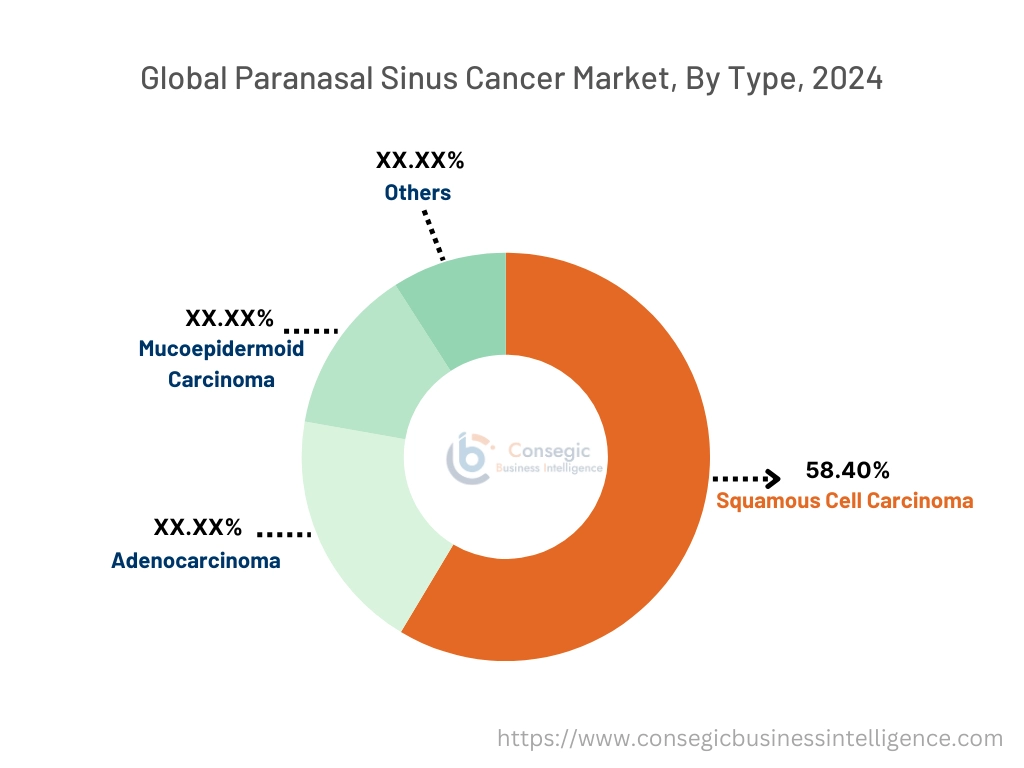
By Diagnosis:
Based on diagnosis, the market is segmented into imaging tests (CT scan, MRI, PET scan), biopsy, endoscopy, and blood tests.
The imaging tests segment accounted for the largest revenue in paranasal sinus cancer market share in 2024.
- Imaging tests, particularly CT and MRI scans, are essential for initial diagnosis, staging, and treatment planning in paranasal sinus cancer.
- Advancements in imaging technology, including 3D reconstruction, have improved accuracy and detection rates.
- PET scans are increasingly used for assessing metastasis and monitoring treatment response, further driving this segment.
- The rising prevalence of sinus-related cancers globally is supporting the paranasal sinus cancer market growth of imaging-based diagnostic approaches.
The biopsy segment is anticipated to register the fastest CAGR during the forecast period.
- Biopsy remains the gold standard for confirming a paranasal sinus cancer diagnosis, providing definitive histological evidence.
- Increased adoption of minimally invasive biopsy techniques, such as endoscopic biopsy, has improved patient outcomes and reduced recovery times.
- Growing awareness among healthcare providers about the importance of tissue diagnosis for targeted therapy selection is boosting paranasal sinus cancer market demand.
- Enhanced diagnostic tools and integration of molecular testing into biopsy procedures are expected to propel paranasal sinus cancer market opportunities in this segment.
By Treatment:
Based on treatment, the market is segmented into surgery, radiation therapy, chemotherapy, targeted therapy, and immunotherapy.
The surgery segment accounted for the largest revenue share in 2024.
- Surgery is the primary treatment modality for localized paranasal sinus cancer, aiming for complete tumor removal and symptom relief.
- Advancements in minimally invasive surgical techniques, such as endoscopic sinus surgery, have enhanced patient recovery and outcomes.
- Increased adoption of robotic-assisted surgical procedures in cancer centers is driving trends in this segment.
- Rising healthcare expenditures and availability of specialized surgeons are further supporting the dominance of the surgery segment.
The immunotherapy segment is anticipated to register the fastest CAGR during the forecast period.
- Immunotherapy, particularly immune checkpoint inhibitors, has emerged as a promising treatment option for advanced and recurrent cases of paranasal sinus cancer.
- Growing clinical evidence supporting the efficacy of immunotherapy in enhancing survival rates is driving its adoption.
- Increased research and development activities focusing on novel immunotherapeutic agents are propelling advancement in this segment.
- Collaboration between pharmaceutical companies and cancer research institutes is expected to further expand the scope of immunotherapy.
By End-Use:
Based on end-user, the market is segmented into hospitals, cancer treatment centers, ambulatory surgical centers, and specialty clinics.
The hospitals segment accounted for the largest revenue share in 2024.
- Hospitals are the primary centers for diagnosis, surgical intervention, and comprehensive treatment of paranasal sinus cancer.
- The availability of multidisciplinary teams, including oncologists, radiologists, and surgeons, ensures holistic patient care in hospitals.
- Rising hospital admissions for cancer-related treatments and advancements in hospital infrastructure are driving trends in this segment.
- Increasing collaborations between hospitals and pharmaceutical companies for clinical trials and advanced therapy access are supporting market expansion.
The cancer treatment centers segment is anticipated to register the fastest CAGR during the forecast period.
- Specialized cancer treatment centers offer tailored care and advanced therapies, including radiation and immunotherapy, for paranasal sinus cancer patients.
- Growing awareness about the benefits of specialized care and the increasing number of dedicated cancer centers globally are boosting growth in this segment.
- Integration of advanced diagnostic and therapeutic technologies in cancer centers enhances patient outcomes, driving paranasal sinus cancer market demand.
- Rising focus on personalized medicine and supportive care in cancer treatment centers is expected to propel growth in this segment.
Regional Analysis:
The regions covered are North America, Europe, Asia Pacific, the Middle East and Africa, and Latin America.
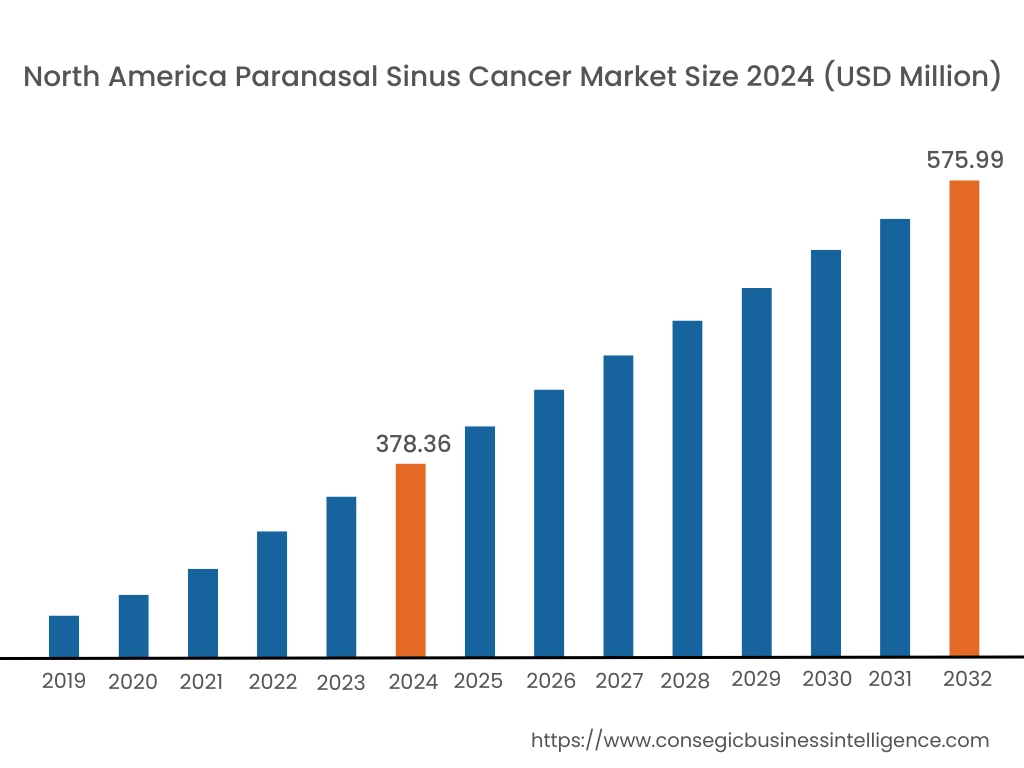
In 2024, North America was valued at USD 378.36 Million and is expected to reach USD 575.99 Million in 2032. In North America, the U.S. accounted for the highest share of 72.50% during the base year of 2024. North America holds a significant stake in the global paranasal sinus cancer market, driven by the availability of advanced diagnostic and treatment options, a well-established healthcare infrastructure, and a growing awareness of rare cancers. As per the paranasal sinus cancer market analysis the U.S. dominates the region due to rising cases of paranasal sinus cancer associated with occupational exposure to carcinogens and tobacco use. Canada contributes through increasing adoption of minimally invasive surgical techniques and radiation therapies. However, the high cost of treatment and limited access to specialized care in rural areas may challenge market expansion in the region.
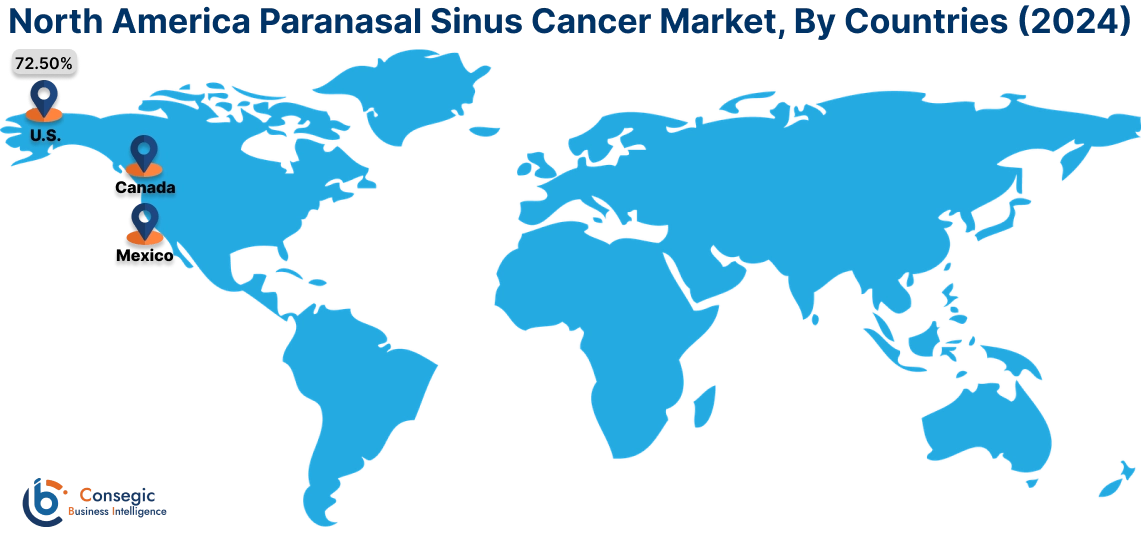
In Asia Pacific, the market is experiencing the fastest growth with a CAGR of 6.1% over the forecast period. The paranasal sinus cancer market analysis portrays, it is fueled by a rising cancer burden, improving healthcare infrastructure, and increasing adoption of advanced diagnostic tools in China, India, and Japan. China dominates the region with growing awareness of rare cancers and rising investments in oncology care, supported by government initiatives. India’s expanding healthcare sector drives the adoption of cost-effective diagnostic and treatment solutions, particularly in urban centers. Japan emphasizes early detection and precision medicine, leveraging its strong medical technology industry. However, limited access to specialized care and affordability issues in rural areas may hinder market growth.
Europe is a prominent market for paranasal sinus cancer, supported by an aging population, increasing incidence of head and neck cancers, and advanced healthcare systems. Countries like Germany, France, and the UK are key contributors. Germany drives demand through its focus on early diagnosis and access to cutting-edge therapies, including proton therapy and immunotherapy. France emphasizes public health initiatives to increase awareness and screening for rare cancers, while the UK invests in research and development for innovative treatments. However, budget constraints in public healthcare systems may limit access to advanced treatments in certain areas.
The Middle East & Africa region is witnessing steady growth in the paranasal sinus cancer market, driven by increasing investments in healthcare infrastructure and rising awareness of cancer diagnostics and treatment. Countries like Saudi Arabia and the UAE are adopting advanced oncology care, including minimally invasive surgeries and targeted therapies, to improve cancer management. In regional analysis shows Africa, South Africa is emerging as a key market, focusing on improving access to diagnostics and treatment for head and neck cancers. However, limited healthcare infrastructure and reliance on international aid for advanced cancer care may restrict market development in the region.
Latin America is an emerging market for paranasal sinus cancer, with Brazil and Mexico leading the region. Brazil’s expanding healthcare sector and increasing focus on cancer screening programs drive demand for diagnostic tools and treatments. The regional analysis shows Mexico emphasizes improving access to oncology care through public health initiatives and partnerships with global healthcare providers. The region is also exploring the use of immunotherapy and advanced radiation techniques in cancer treatment. However, economic instability and inconsistent healthcare infrastructure may pose challenges to market growth in smaller economies.
Top Key Players and Market Share Insights:
The paranasal sinus cancer market is highly competitive with major players providing products to the national and international markets. Key players are adopting several strategies in research and development (R&D), product innovation, and end-user launches to hold a strong position in the paranasal sinus cancer market. Key players in the paranasal sinus cancer industry include -
- Hoffmann-La Roche AG (Switzerland)
- Bristol Myers Squibb (United States)
- Sanofi S.A. (France)
- Johnson & Johnson (United States)
- Bayer AG (Germany)
- Merck & Co., Inc. (United States)
- Pfizer Inc. (United States)
- Eli Lilly and Company (United States)
- AstraZeneca plc (United Kingdom)
- Novartis AG (Switzerland)
Paranasal Sinus Cancer Market Report Insights :
| Report Attributes | Report Details |
| Study Timeline | 2019-2032 |
| Market Size in 2032 | USD 1,777.18 Million |
| CAGR (2025-2032) | 5.7% |
| By Type |
|
| By Diagnosis |
|
| By Treatment |
|
| By End-Use |
|
| By Region |
|
| Key Players |
|
| North America | U.S. Canada Mexico |
| Europe | U.K. Germany France Spain Italy Russia Benelux Rest of Europe |
| APAC | China South Korea Japan India Australia ASEAN Rest of Asia-Pacific |
| Middle East and Africa | GCC Turkey South Africa Rest of MEA |
| LATAM | Brazil Argentina Chile Rest of LATAM |
| Report Coverage |
|
Key Questions Answered in the Report
What is the projected market size of the Paranasal Sinus Cancer Market by 2032? +
Paranasal Sinus Cancer Market size is estimated to reach over USD 1,777.18 Million by 2032 from a value of USD 1,140.65 Million in 2024 and is projected to grow by USD 1,185.34 Million in 2025, growing at a CAGR of 5.7% from 2025 to 2032.
What factors are driving the Paranasal Sinus Cancer Market? +
Key drivers include advancements in diagnostic technologies such as PET scans and MRI, innovations in targeted and immunotherapy treatments, and increasing awareness of early diagnosis.
What challenges does the market face? +
Challenges include high recurrence rates, resistance to conventional therapies, and limited availability of reliable biomarkers for predicting treatment responses.
Which type segment leads the market? +
The squamous cell carcinoma segment leads the market due to its high prevalence and advancements in early diagnostic and targeted treatment options.
Which treatment segment is growing the fastest? +
The immunotherapy segment is anticipated to grow at the fastest CAGR, driven by increasing adoption of immune checkpoint inhibitors and growing clinical evidence supporting their efficacy.
